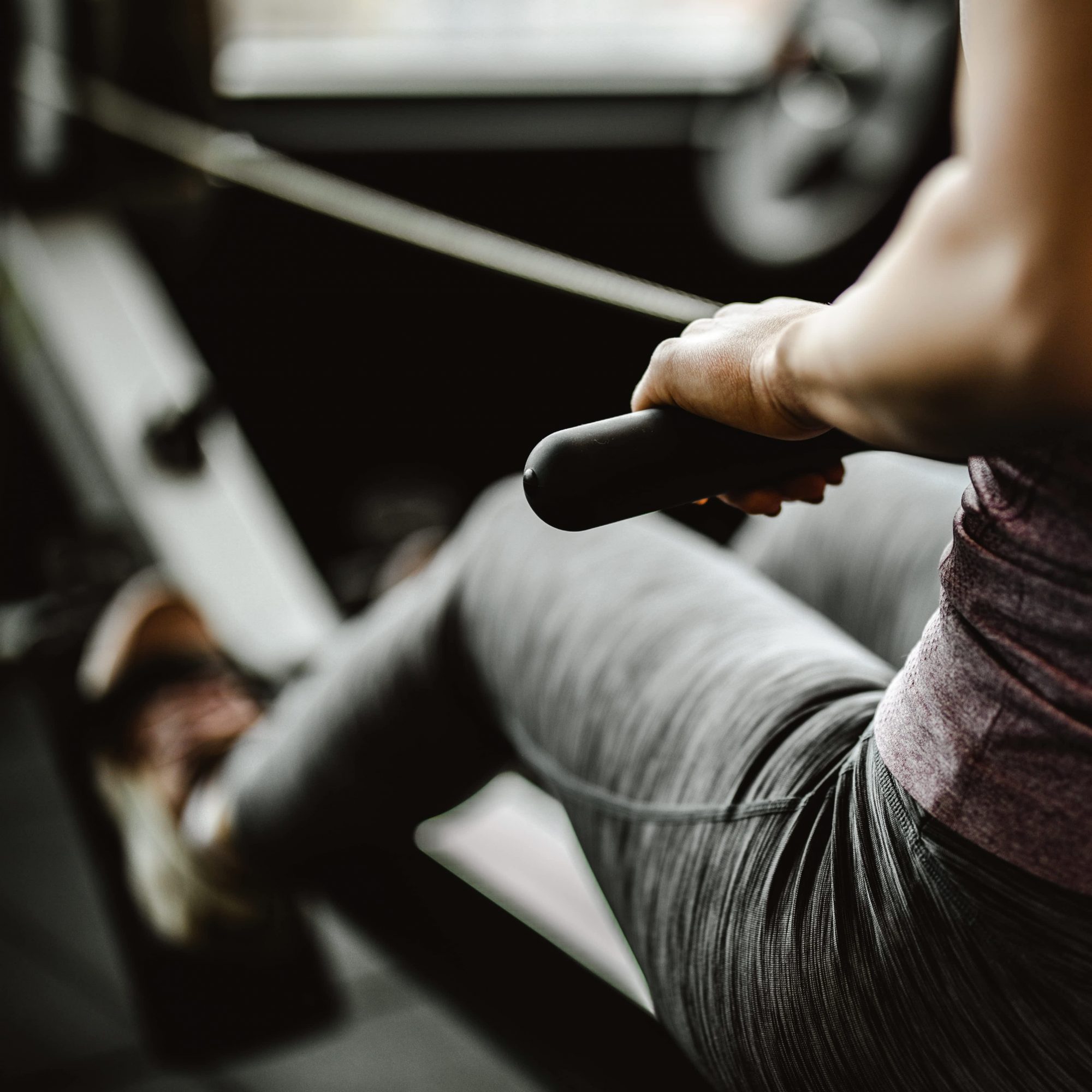
- POPSUGAR Australia
- Fitness
- Master Your Rowing Machine Technique With This 20-Minute Beginner Workout
Master Your Rowing Machine Technique With This 20-Minute Beginner Workout

When test driving a new fitness tool, it’s important to get to know each other before jumping into anything serious. The rowing machine, for example, looks like a one-trick pony – but, if you think you have it all figured out, think again.
Did you know that 84 percent of your muscles must activate to perform each rowing stroke? The founding instructor of CityRow, Annie Mulgrew, confirms this, and explains that your entire postural chain is working when you row – that includes your hamstrings, glutes, lats, and traps.
Those muscles just so happen to get weak and tight from sitting for long periods, Mulgrew adds. That’s why it’s essential to approach the rowing machine with a plan that safely maximizes its low-impact aerobic and anaerobic benefits.
“To get the most out of your rowing workouts, take the time to learn the proper rowing stroke and familiarize yourself with stroke rate (think: speed) and split time (think: intensity) so that you [can] row safely and vary your workouts according to your goals,” Mulgrew says.
And a little tip from Mulgrew on avoiding injuries: it’s always best to prioritize proper form over speed. She suggests practicing at a lower stroke rate until you move on to faster speeds to keep an effective technique.
If you’re still unsure of what that looks like, don’t stress. Mulgrew has our backs with a 20-minute beginner rowing workout designed to teach proper technique, introduce stroke rate and split time, and familiarize your body with working at different intensities.
Related: Miss Your Rowing Machine? These 3 At-Home Moves Can Help You Mimic It
Warmup
The following body positioning drills will help you learn the breakdown of the strokes, Mulgrew says. If you’re unsure of your form, you can check out this guide.
- Think of your back as a clock. When your arms and legs are fully extended, is your back straight up and down? If so, that’s called the 12 o’clock position. When rowing, it’s important to transition from 11 o’clock (past 12 o’clock) to 1 o’clock (before 12 o’clock) – this is the proper form for what is called the hip swing. At full extension, transition between 11 o’clock to 1 o’clock for 10 reps to practice correcting your upper-body form.
- Now, add your legs into your hip swing for 10 reps at the back of the stroke. (Keep your arms straight!)
- Next, complete 10 reps with just your arms while keeping the hold at the end of the stroke. (Your legs should be extended and your hips should be at 11 o’clock!)
Workout
Now, apply what you learned throughout the warmup to this beginner workout, Mulgrew says.
- Row for three minutes (or about 60 strokes) at a slow pace, focusing on the coordination of the stroke and establishing that muscle memory. Repetition will lead to skill if you continue to practice proper form.
- Now, row for one minute at about 20 spm (strokes per minute). That is a three-count recovery tempo back to the catch (also known as the front of the machine or the start of the stroke).
- Then, row for one minute at about 24 spm. That is a two-count recovery tempo.
- Finally, row for one minute at about 28 spm. That is a one-count recovery tempo.
- Repeat these stroke-rate drills until you feel comfortable controlling your speeds.
Advanced Modification
“Once you feel confident in your form and stroke rates, try out the following workout, Mulgrew says.
- Row for two minutes at about 20 spm. Check your distance covered in those two minutes.
- Now, repeat for two more rounds, adding more power (aka averaging a lower split time to cover more distance) in each of the two-minute efforts.
- Lastly, complete two more sets of two-minute rounds, but aim for about 24 spm and then about 28 spm.
Mulgrew points out that rowing is similar to deadlifting, as they both require strong postural chain muscles – so, if you need a quick cooldown, check out this deadlift option. Or, feel free to check out a 10-minute cooldown for all workout types, here.
Click here for more health and wellness stories, tips, and news.

